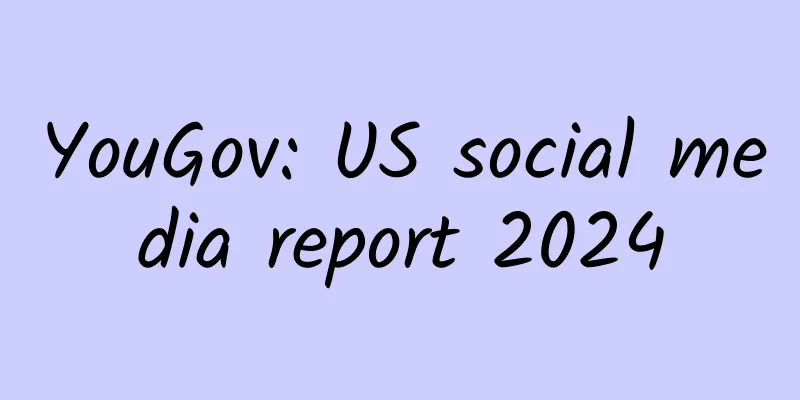After eating the cake, it turns into "Bluetooth". Is it safe to add so much food coloring?

|
Audit expert: Wang Guoyi Postdoctoral fellow in Nutrition and Food Safety, China Agricultural University Not long ago, there was news that "an Internet-famous tea shop was investigated for adding the colorant Sunset Yellow beyond the scope". A few days later, there was news that "a citizen turned into Bluetooth after eating a cake, and it was suspected that the cake's colorant exceeded the standard" became a hot search on Weibo. Fortunately, there was no cake to smear on the face to celebrate, otherwise he would have really turned into Avatar. No, it could also be the Smurfs. Blue cake in the hot search event Source: Weibo In recent years, food safety incidents caused by color problems have frequently occurred: "Sudan red eggs", "dyed green beans", "dyed steamed buns", "ink black sesame" seem to emphasize to consumers that pigments threaten the safety of people's tongues. This has also made consumers resistant to food pigments, and they almost turn pale at the mention of "pigments", and avoid artificial synthetic pigments. So, what exactly are food pigments? Can they really harm our bodies? 1 What are food colorings? Chinese people have always been particular about the color, aroma and taste of food, among which color is the most direct visual impact. In order to better optimize the color of food, food pigments appeared. Food pigments are also called food colorants. The literal meaning is easy to understand. It means adding color to food, improving the deterioration or deviation of the natural color of food, making the color of food uniform, thereby increasing consumers' desire to buy and appetite. Colorful candies Source: Pixabay The history of food coloring can be traced back to ancient Egypt, when local candy manufacturers used it to improve the color of candies, using natural extracts and wine as raw materials. Later, people added a spice called saffron to food to ensure a beautiful color. Saffron Source: Pixabay After the Industrial Revolution, the food industry emerged and more and more pigments were developed. Food additives during this period contained metals and toxic substances, which were used to cover up inferior and adulterated food. In the early 20th century, there were more than 80 unapproved artificial synthetic pigments on the European and American markets. Later, due to the simple production process and low price, artificial synthetic pigments began to be produced in large quantities. However, food safety issues have gradually attracted people's attention, and countries around the world have introduced many regulations to respond. For example, the number of artificial synthetic colors approved for use in the United States has dropped sharply from 700 to 7, and there are only 11 artificial synthetic colors approved for use in my country. 2 The difference between natural pigments and synthetic pigments Food pigments can be divided into two categories according to their sources: natural pigments and synthetic pigments. As the name implies, natural pigments come from natural products, such as plants and animals. For example, carrot pigment is extracted from carrot rhizomes, lycopene is extracted from tomatoes, etc. In addition, there are also pepper red, beet red, gardenia yellow, etc. Some also come from animals or microorganisms, such as cochineal red and red yeast rice. Natural plants and vegetables Source: Pixabay They are often added to food ingredients to help increase the color of food, such as colorful seasonal vegetable noodles, steamed bread, etc. Compared with artificial synthetic pigments, natural pigments are relatively safer and contain rich nutrients such as vitamins. However, their properties are unstable, their solubility is poor, and their preparation cost is high, so they are only used in some pastries, canned foods, and beverages. Colorful Vegetable Butterfly Noodles Source: Pixabay Artificial synthetic pigments are made from organic chemical raw materials through synthesis, purification, and refining processes, and are also called tar pigments. Synthetic pigments that meet the requirements of food additives in my country include carmine, amaranth, sunset yellow, erythrosine, lemon yellow, new red, indigo, brilliant blue, etc. Brightly colored jelly beans Source: Pixabay Compared with natural pigments, artificial synthetic pigments are more stable, brightly colored, have a strong coloring, and have low preparation costs. Therefore, they are widely used in food industries such as beverages, candies, and seasonings. 3 Are food colorings safe? Recently, the artificial color "Sunset Yellow" has come into the public eye because of excessive addition of artificial colors in beverage shops. Some media reported that consuming certain artificial colors would affect children's IQ, cause damage to the kidneys and liver, etc., which made everyone panic. Looking at the bright and refreshing drink in their hands, they don't know whether to drink it or not. Synthetic pigment sunset yellow detected in beverages Source: Weibo Because I am wondering, are food colorings harmful? Why is the sunset yellow business being investigated even though it is a synthetic coloring permitted by the state? If you are confused, read on. Netizens' doubts Source: Weibo >>>>Believe in national standards All food additives that meet national standards must be screened and strictly reviewed by relevant agencies before they can be used normally. Therefore, "Sunset Yellow" is a "legitimate" additive that meets my country's food additive regulations, and there is no need to question it. Substances such as "Sudan Red" mentioned in previous news are "illegal additives" and are chemical dyes that are strictly prohibited from use in food. They cannot be compared with the artificial color "Sunset Yellow" in this news. >>>>It is unscientific to talk about toxicity without considering the dosage my country's "National Food Safety Standard for the Use of Food Additives (GB2760)" has very clear and specific guidelines for the use of food additives, including the scope of use, dosage standards, etc. And these standard dosages have all undergone strict safety assessments. Take the sunset yellow mentioned in the news for example, its safe intake is no more than 4 mg/kg (body weight) per day. For a person weighing 60 kg, it is equivalent to a maximum intake of more than 240 mg per day, which may be dangerous. How much is 240 mg of sunset yellow? According to the national standard, the limit of sunset yellow in beverages is 100 mg/kg. (It is just that tea and coffee beverages are not included in the scope of use, so it is judged as "over-range use".) The largest bottle of Coke is 2.3 liters Source: Sohu According to this amount, one would need to drink 2.4 liters of a beverage with the highest standard dose of sunset yellow every day to exceed the standard. However, the average person drinks about 2 liters of water every day. Therefore, the standard still leaves a large safety limit. >>>>Application scope of different pigments The country has very clear requirements on the scope of use of food additives that meet the standards. Taking sunset yellow as an example, it is allowed to be used in the production and processing of more than 30 kinds of food including jam, chocolate products, carbonated beverages, etc. However, the maximum amount of Sunset Yellow used in different foods is different. For example, the maximum amount of Sunset Yellow used in each kilogram of jam is 0.5 grams, while the maximum amount of Sunset Yellow used in each kilogram of nut products and carbonated beverages is 0.1 grams per kilogram. Like Sunset Yellow, each pigment has strict usage standards, so as long as you purchase products from qualified manufacturers through regular channels, you can eat them with confidence. There is no need to worry or be anxious about food additives. >>>>Don’t be “lustful” when eating Whether it is the sunset yellow internet celebrity drink or the "Avatar blue" internet celebrity cake, the beauty of the food itself is indispensable to attract consumers, and the merchants just take advantage of this. In fact, there is no need to deliberately pursue the beauty effect of internet celebrity products. The most important thing is that the food you eat is nutritious and delicious. Delicious food Source: Pixabay Source: Digital Beijing Science Center |
>>: What is rice noodle? What are the steps to make spicy rice noodle at home?
Recommend
Is it necessary to have an injection after the surgery?
Chocolate cyst surgery is also known as ovarian c...
Four Seasons Pharmacist says: Learn these and you won’t be afraid of mosquito bites anymore!
The weather is getting hotter and hotter, and it ...
How to store peaches for a long time? What is the best way to store fresh peaches?
Peaches can be processed into canned food, peach ...
What happens if a woman has a lump in her groin?
A healthy body can make people live happier in li...
Is constipation normal during pregnancy?
It is actually very common to experience constipa...
What are the symptoms of menopause?
Menopause is a very critical and sensitive period...
Will multiple medical abortions make the vagina looser and larger?
The vagina is the most important part of a woman&...
How long does it usually take to get pregnant?
Most people think that as long as they are women,...
Can pregnant women eat ham mooncakes?
Ham mooncakes are a fruit variety that is deeply ...
Lower abdominal pain three days after intercourse
If a man and a woman do not want to get pregnant ...
37 weeks pregnant, shortness of breath, chest tightness
Some women experience chest tightness, shortness ...
Should nails be cut into round or square shapes? How short should they be cut? I didn’t expect there are so many things to know about nail cutting
Cut your nails Different people have different cu...
What causes female nipple pain?
The breast is an important organ for women and is...
What are the symptoms of hypoglycemia during pregnancy?
Carrying a baby is something that every woman mus...









